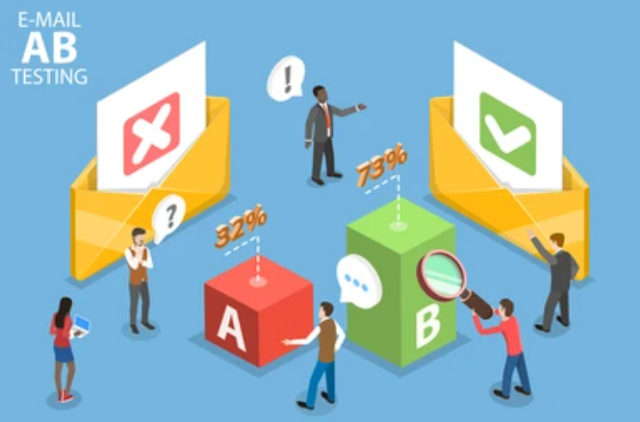A/B Testing for Email Campaign Optimization
In the world of email marketing, standing out and capturing your audience's attention is essential for driving engagement and achieving optimal results. A/B testing, also known as split testing, is a powerful technique that allows you to compare two versions of an email campaign to determine which one performs better. By systematically testing different elements, you can uncover valuable insights and make data-driven decisions to optimize your email campaigns. In this article, we will explore the importance of A/B testing and provide practical tips for conducting effective tests to enhance your email marketing efforts.
Understand the Importance of A/B Testing
A/B testing is crucial for unlocking the potential of your email campaigns. It enables you to make informed decisions based on real data rather than relying on assumptions or best practices. By testing different variables, you can uncover insights into what resonates with your audience, optimize your campaigns, and achieve better results. A/B testing helps you refine your subject lines, email content, calls-to-action, visuals, and other elements, leading to improved open rates, click-through rates, conversions, and overall campaign performance.
Define Clear Objectives and Hypotheses
Before conducting an A/B test, it's important to define clear objectives and hypotheses. What specific aspect of your email campaign do you want to improve? Whether it's increasing open rates, click-through rates, or conversions, be clear about your goals. Formulate hypotheses about which elements you believe will have a positive impact on your desired metrics. For example, you may hypothesize that a personalized subject line will result in higher open rates. Setting clear objectives and hypotheses helps you focus your testing efforts and measure success accurately.
Test One Variable at a Time
To obtain accurate and actionable results, it's crucial to test one variable at a time. By isolating and testing individual elements, such as subject lines, email layouts, colors, or calls-to-action, you can pinpoint the specific impact of each variable. Testing multiple variables simultaneously can lead to confounding results and make it difficult to identify the key driver of performance. By testing one variable at a time, you gain a clear understanding of its impact and can make informed decisions for future optimizations.
Split Your Audience and Establish Sample Sizes
To conduct an A/B test, divide your audience into two equal or similar segments: the control group and the test group. The control group receives the original version of your email, while the test group receives the variation with the specific element you want to test. It's important to establish appropriate sample sizes to ensure statistical significance. Larger sample sizes increase the reliability of your results, so aim for a substantial number of recipients in each group to draw accurate conclusions.
Monitor and Measure Key Metrics
During your A/B test, closely monitor and measure the key metrics you're targeting. Track open rates, click-through rates, conversions, and other relevant metrics to assess the performance of each variation. Analyzing these metrics will help you identify which version is performing better and whether the tested variable has had a significant impact. Use email marketing analytics tools or platforms to track and analyze the data accurately.
Learn from the Results and Iterate
Once you have gathered sufficient data and analyzed the results, it's time to draw conclusions and make data-driven decisions. Compare the performance of the control group with that of the test group and evaluate the impact of the tested variable. If the test group outperforms the control group significantly, consider implementing the winning variation as part of your regular email campaigns. If the results are inconclusive or the impact is minimal, iterate and test alternative variables to further optimize your email campaigns.
Continuously Test and Refine
A/B testing is an ongoing process, and optimization is an iterative journey. Use the insights gained from each test to inform future tests and refinements. Test different variables, explore new ideas, and adapt to changing trends or audience preferences. Continuously refine and optimize your email campaigns based on the data-driven insights you gather from A/B testing. This iterative approach allows you to improve engagement, conversion rates, and overall campaign performance over time.
Conclusion
A/B testing is a vital practice for optimizing your email marketing campaigns. By conducting systematic tests, you can unlock valuable insights into what resonates with your audience and make data-driven decisions to enhance your email performance. Remember to define clear objectives, test one variable at a time, split your audience effectively, monitor and measure key metrics, learn from the results, and continuously refine your campaigns. A/B testing empowers you to optimize subject lines, content, calls-to-action, and other elements to improve open rates, click-through rates, conversions, and ultimately, the success of your email marketing efforts. Embrace A/B testing as a powerful tool in your arsenal and leverage data to drive ongoing improvements in your email campaigns.












